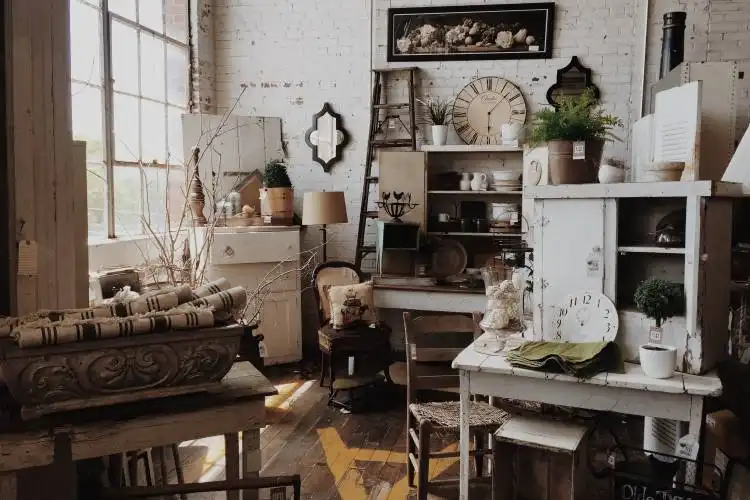Start a Cabinet Making Business
Crafting Functional Masterpieces: The Art of Cabinet Making Business
| Updated


CABINET MAKING BUSINESS
Unleash your artistic flair by starting a Cabinet Making Business - the ideal venture for those who are both hands-on and have a keen eye for detail. It’s like being a wizard whose magic wand is a tool kit! This type of business encompasses designing, creating, and selling handcrafted wooden furniture. You’re not just a cabinet maker, but a maestro turning lumber into functional pieces of art for homes and businesses, transforming spaces into realms of cultured elegance.
Jump to Business Plan
RELATED BUSINESS IDEAS
Browse ALL Home Improvement & Repair Solutions Business Ideas
Discover Your Perfect Domain
Unlock the door to your online success with our hand-picked selection of premium domain names. Whether you're starting a new venture or rebranding an existing one, the right domain can set the tone for your digital presence. Browse through our curated list, each with its unique potential to enhance your brand's visibility and credibility.
CABINET MAKING MINI BUSINESS PLAN
This a quick reality check to help you identify the strengths and weaknesses of your business concept before you dive in.
Expected Percent Margin:
- Gross Margin: 25-35%
- Net Profit Margin: 5-10%
Earnings Expectations:
Assuming average job cost of $2,500
- Daily Earnings: $250 - $500 (Based on 1-2 jobs per week spread across work days)
- Weekly Earnings: $1,250 - $2,500
- Monthly Earnings: $5,000 - $10,000
- Annual Earnings: $60,000 - $120,000
Actions to Hit Those Numbers:
Product Development:
- Cabinet Types: Develop at least 3-4 types of cabinets for kitchens, bathrooms, etc with various design options.
- Quality Control: Ensure your cabinets are of high quality and durable. Quality begets referrals.
Marketing and Customer Acquisition:
- Portfolio: Create a comprehensive portfolio of your past work.
- Advertisements: Leverage online and offline channels for promoting your business. Allocate around $500/month for advertising.
- Network: Make use of home improvement fairs, local business meetups etc, to connect with potential customers.
Sales and Customer Experience:
- Quotations: Provide clear and competitive price quotes to potential customers.
- Customer Support: Provide excellent pre and post-sales service to ensure customer satisfaction and earn repeat business.
Cost Control:
- Suppliers: Build relationships with timber and hardware suppliers to procure materials at a lower cost.
- Efficiency: Streamline processes and reduce waste to optimize operating costs.
Business Operations:
- Work Schedule: Work on 1-2 jobs/week initially. Scale as your team grows.
- Workforce: Employ skilled craftsmen, and ensure proper training for maintaining quality.
Always consult with a financial advisor to tailor these projections and strategies to your unique circumstances.
NOT WHAT YOU HAD IN MIND? Here are more ideas



Browse ALL Home Improvement & Repair Solutions Business Ideas
Grab Your Business Website Name
Before you get caught up in the whirlwind of setting up your business, invest in a domain name. It's a small but significant step that lays the foundation for your brand and makes it easier for customers to find and trust you. Just like you wouldn't build a house without securing the land first, don't build a business without securing your domain name.
"Why? Can't that wait?" Here's why it shouldn't
Step 1: Determining if a Cabinet Making Business is Right for You
Breakdown of Startup Expenses
Before starting a cabinet making business, it is important to understand the startup costs associated with the venture. This includes the cost of materials, equipment, and any other necessary supplies. Additionally, it is important to consider the cost of renting or leasing a workspace, as well as any licensing or permitting fees. It is also important to consider the cost of marketing and advertising, as well as the cost of any necessary insurance. Finally, it is important to consider the cost of any labor that may be necessary to get the business off the ground.
Breakdown of Ongoing Expenses
After the initial startup costs, there are ongoing expenses associated with running a cabinet making business. This includes the cost of materials, equipment, and any other necessary supplies. Additionally, it is important to consider the cost of rent or lease for the workspace, as well as any licensing or permitting fees. It is also important to consider the cost of marketing and advertising, as well as the cost of any necessary insurance. Finally, it is important to consider the cost of any labor that may be necessary to keep the business running.
Examples of Ways to Make Money
There are many ways to make money in a cabinet making business. One way is to sell custom-made cabinets directly to customers. This can be done through a website, at craft fairs, or through other outlets. Additionally, it is possible to make money by selling cabinet components, such as doors, drawers, and hardware. Finally, it is possible to make money by offering cabinet installation services. This can be done through subcontracting or by hiring employees.
Step 2: Naming the Business
When naming a business, it is important to choose a name that is memorable and that reflects the values of the business. It should also be easy to spell and pronounce. Additionally, it is important to make sure that the name is not already taken by another business. It is also important to make sure that the name is available for trademarking.
When selecting a name, it is important to consider the type of business. For a cabinet making business, a name that reflects the craftsmanship and quality of the cabinets being made is ideal. Additionally, it is important to consider the target market for the business. For example, a name that implies luxury and sophistication may be more appropriate for a high-end cabinet making business.
Once a name has been chosen, it is important to check that the domain name is available. This will allow the business to have an online presence and will make it easier for customers to find the business. Additionally, it is important to check that the name is available for trademarking. This will protect the business from competitors using the same name.
Finally, it is important to make sure that the name is not already taken by another business. This can be done by searching the business name on the Secretary of State website or by searching the US Patent and Trademark Office website. If the name is already taken, it is important to choose a different name.
Step 3: Obtaining the Necessary Licenses and Permits
Before you can start your cabinet making business, you will need to obtain the necessary licenses and permits. Depending on the state you are in, you may need to obtain a business license, a sales tax license, and/or a contractor’s license. You may also need to register your business with the IRS and obtain a Federal Employer Identification Number (FEIN). Additionally, you may need to obtain permits from your local government in order to operate your business. These permits may include a zoning permit, a building permit, and/or an environmental permit.
In order to obtain the necessary licenses and permits, you will need to contact your local government offices. You can find contact information for your local government offices on the website of your state government. Additionally, you may need to contact the Small Business Administration (SBA) for assistance in obtaining the necessary licenses and permits. The SBA can provide you with information on the specific requirements for your business and can help you with the paperwork.
Once you have obtained the necessary licenses and permits, you will need to keep them up to date. This means that you will need to renew them every year and make sure that you are complying with all applicable laws and regulations. Additionally, you may need to obtain additional licenses and permits as your business grows.
Finally, you will need to make sure that you are complying with all applicable laws and regulations. This means that you will need to stay up to date on any changes to the laws and regulations that affect your business. Additionally, you may need to obtain additional licenses and permits as your business grows. Keeping up with the laws and regulations will help ensure that your business is operating legally and that you are not running into any problems with the government.
Step 4: Finding a Suitable Location
Finding the right location for a cabinet making business is essential to success. The ideal location should have plenty of space for a workshop, storage, and an office. It should also be easily accessible to customers and suppliers. Additionally, the location should be zoned appropriately for the type of business being operated. It is important to research local zoning laws to ensure that the business is in compliance with all regulations.
When looking for a suitable location, consider the cost of rent or purchasing the property, the availability of utilities, and the potential for growth. It is also important to consider the local competition and the potential customer base. If possible, visit the area and talk to local business owners to get a better understanding of the area. Additionally, it is important to research the local economy and determine if the area is a good fit for the business.
Finally, it is important to consider the long-term plans for the business. If the business is expected to grow, it is important to find a location that can accommodate that growth. This includes finding a location that has enough space to expand the workshop and office as needed. Additionally, it is important to find a location that is close to suppliers and customers, as this will help reduce transportation costs.
Step 5: Acquiring the Necessary Equipment
Once the business is up and running, the next step is to acquire the necessary equipment. This includes tools such as saws, drills, routers, and sanders. It also includes materials such as wood, screws, nails, and glue. Depending on the type of cabinets being made, additional materials such as paint, varnish, and hardware may also be needed. It is important to research the best quality tools and materials to ensure the cabinets being made are of the highest quality. Additionally, it is important to purchase the right amount of materials to ensure there is enough to complete the job without overspending. It is also important to consider the cost of shipping materials, as this can add up quickly. Finally, it is important to consider the cost of storage for the materials and tools, as this will be an ongoing expense.
Step 6: Developing a Business Plan
A business plan is an essential part of any business. It is a written document that outlines the goals and objectives of the business, as well as the strategies and tactics to be used to achieve them. It also serves as a roadmap for the business and helps to ensure that the business is on track to reach its goals. When developing a business plan for a cabinet making business, it is important to consider the following elements:
Market Analysis: A market analysis should be conducted to understand the current market conditions, the competition, and potential customers. This will help to identify the target market and the strategies that will be used to reach them.
Financial Plan: A financial plan should be developed to determine the startup costs, ongoing expenses, and potential sources of revenue. This will help to ensure that the business is financially viable and that it will be able to cover its expenses.
Marketing Plan: A marketing plan should be developed to identify the strategies and tactics that will be used to reach potential customers. This should include both traditional and digital marketing strategies.
Operations Plan: An operations plan should be developed to outline the processes and procedures that will be used to run the business. This should include the production process, customer service policies, and any other operational procedures.
Risk Management Plan: A risk management plan should be developed to identify any potential risks that could affect the business and to develop strategies to mitigate them. This should include both internal and external risks.
Exit Strategy: An exit strategy should be developed to outline the steps that will be taken if the business is no longer viable. This should include a plan for winding down the business and selling any assets.
Step 7: Developing a Marketing Plan
A marketing plan is essential for any business, and cabinet making is no exception. It is important to develop a plan that will help you reach your target audience and build your customer base. Consider using a combination of traditional and digital marketing tactics, such as print ads, radio spots, television commercials, and social media campaigns. You should also consider developing a website and blog to showcase your work and provide potential customers with more information about your services. Additionally, consider attending trade shows and local events to get your name out there and build relationships with potential customers. Finally, consider offering discounts and promotions to encourage customers to purchase your products.
Step 8: Hiring Employees
Hiring employees is an important step in starting a cabinet making business. It is important to hire employees who have the right skills and experience to help the business grow. Before hiring employees, it is important to create a job description and list the necessary skills and qualifications. It is also important to consider the cost of hiring employees, including wages, benefits, and taxes. Additionally, it is important to create a hiring process that is fair and efficient. This should include an application process, interviews, and background checks. It is also important to create a training program to ensure that employees are properly trained and understand the company’s policies and procedures. Finally, it is important to create a system for evaluating employees and providing feedback to ensure that employees are meeting expectations and the business is running smoothly.
Step 9: Opening the Business
Opening a cabinet making business requires a lot of preparation and planning. To open the business, the entrepreneur must obtain the necessary permits and licenses. Depending on the location, the entrepreneur may need to obtain a business license, a sales tax license, and a zoning permit. Additionally, the entrepreneur must register the business with the Internal Revenue Service (IRS) and the state’s department of revenue. Once the paperwork is completed, the entrepreneur can open the business and begin marketing the services. To attract customers, the entrepreneur can create a website, advertise in local newspapers, and attend trade shows. Additionally, the entrepreneur can reach out to local contractors and home builders to offer their services. Finally, the entrepreneur should create a customer loyalty program to reward customers for their repeat business. This will help the business to build a strong customer base and increase profits.
EXPLORE MORE CATEGORIES
Browse ALL Business Idea Categories
TAKE THE NEXT STEPS









